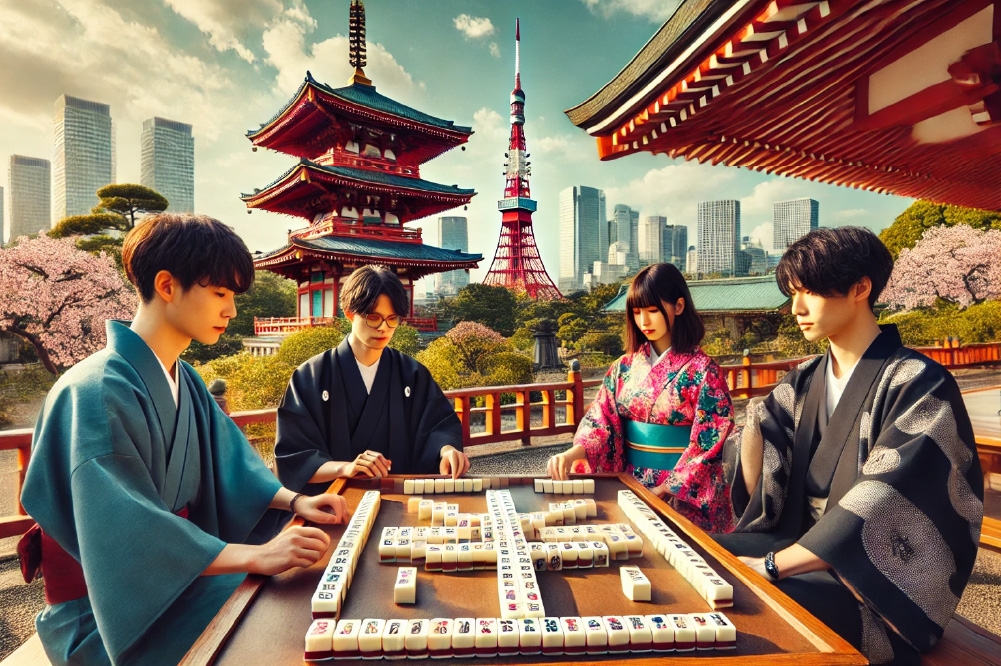Mahjong is a game that’s both universally beloved and uniquely diverse, with multiple styles that reflect the culture and traditions of the regions where it’s played. From classic Chinese mahjong to the strategic twists of Japanese Riichi and the distinctive rules of American mahjong, each variation brings its own flair to the table. Here’s a closer look at some of the most popular styles and what makes them unique.

1. Chinese Mahjong: The Foundation of It All
Chinese Mahjong is the original form of the game, and it’s the foundation upon which other styles are built. The rules are straightforward: players aim to complete a hand of 14 tiles, usually in the form of four sets (sequences or triplets) and a pair. With a strong emphasis on simplicity, Chinese mahjong doesn’t require extra elements, making it accessible and perfect for players who enjoy a faster, more streamlined game. Notably, Chinese mahjong is often divided into further sub-styles, such as Hong Kong Mahjong, Cantonese, and Taiwanese variations, each with subtle rule differences and scoring methods.
2. Japanese Mahjong (Riichi): Strategy Meets Suspense
Japanese Mahjong, or Riichi Mahjong, brings a heightened level of strategy and suspense. One unique feature in Riichi is the “Riichi declaration,” which allows players to announce when they are one tile away from winning. This declaration adds a layer of risk and excitement because it locks in the player’s tiles, prohibiting further changes to their hand. Riichi also includes “Dora” tiles, bonus tiles that can significantly boost points if included in a winning hand. Scoring in Japanese Mahjong is complex, with various hand combinations and the use of “yaku” (specific hand requirements) that players must meet to declare a win. The strategic depth of Riichi makes it especially popular in competitive settings, including the World Mahjong Tour.
3. American Mahjong: Adding Complexity and Customization
American Mahjong stands out due to its distinct tile sets and a unique annual card of hands published by the National Mah Jongg League. Each year, a new card is issued, listing the official winning hands for players to aim for. This format adds a fresh challenge, as players need to adapt to new patterns and combinations each season. American Mahjong sets typically include jokers and extra flowers, and these tiles provide flexibility and customization within a hand. Scoring also differs, as players accumulate points based on the complexity of the hand they complete, with additional points awarded for using jokers or completing specific combinations. This style is especially popular in the United States and among social circles where the annual card brings a sense of novelty to each game.
4. Taiwanese Mahjong: Emphasizing High Points and Large Hands
Taiwanese Mahjong is similar to the Chinese style but ups the ante with a few modifications that add excitement and reward risk-taking. In this variation, players work to complete a 16-tile hand (rather than the standard 14), making it possible to build larger and more complex combinations. Taiwanese mahjong also emphasizes high-point hands, with bonuses for completing multiple sets or achieving rare hands. This style is popular among players who enjoy taking risks and strategizing for high-reward plays.
5. Korean Mahjong: Speed and Simplicity
Korean Mahjong simplifies the rules and number of tiles to create a fast-paced, competitive experience. In this style, only 104 tiles are used, as opposed to the 144 tiles found in most other versions, and all character suit tiles are removed. Korean Mahjong is typically played by three people rather than four, and games can move quickly due to these streamlined rules. This style appeals to players who enjoy mahjong but want shorter games with simpler hands.
6. Singaporean and Malaysian Mahjong: A Fusion of Influences
In Singapore and Malaysia, mahjong is played with rules that combine elements from Chinese, Japanese, and Western versions. This style often uses a standard 144-tile set, but incorporates a blend of hands, scoring systems, and even betting structures influenced by the region’s diverse cultures. Popular hands often mirror those found in Chinese styles, but players also adopt strategies and scoring methods from Japanese and other variations, making this a unique fusion style.

Choosing Your Style: Which Mahjong is Right for You?
Selecting a mahjong style depends on your personal preference and the experience you’re looking for:
- For Tradition and Simplicity: Chinese Mahjong is a timeless classic.
- For Strategy and Suspense: Japanese Riichi offers a competitive and strategic environment.
- For Customization and Social Play: American Mahjong’s evolving card system brings something new each year.
- For Quick and Light Games: Korean Mahjong is fast-paced and straightforward.
Ready to Experience Mahjong in Action?
No matter your preferred style, the World Mahjong Tour offers a platform for players of all backgrounds and skill levels to come together. Check out the players who’ve joined our community, and get ready to test your skills at one of our upcoming tournaments in Las Vegas. It’s your chance to engage with the global mahjong community, sharpen your skills, and compete for exciting prizes!


